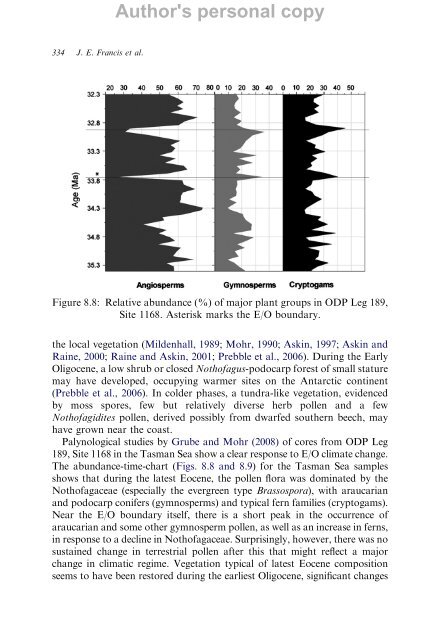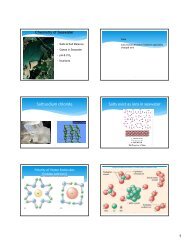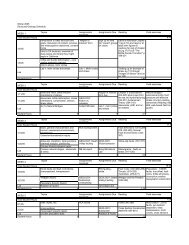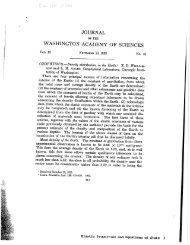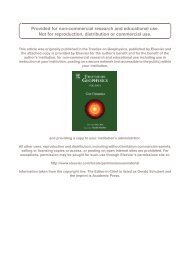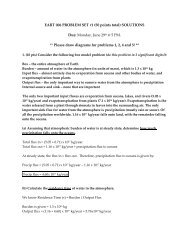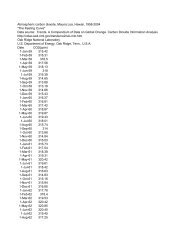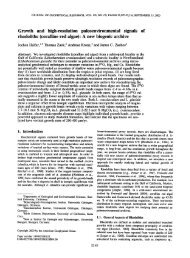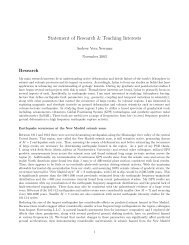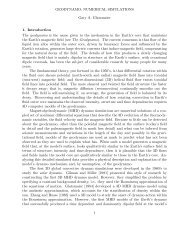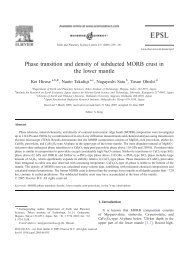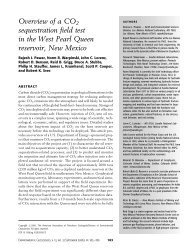From Greenhouse to Icehouse – The Eocene/Oligocene - UMass ...
From Greenhouse to Icehouse – The Eocene/Oligocene - UMass ...
From Greenhouse to Icehouse – The Eocene/Oligocene - UMass ...
You also want an ePaper? Increase the reach of your titles
YUMPU automatically turns print PDFs into web optimized ePapers that Google loves.
334 J. E. Francis et al.<br />
Author's personal copy<br />
Figure 8.8: Relative abundance (%) of major plant groups in ODP Leg 189,<br />
Site 1168. Asterisk marks the E/O boundary.<br />
the local vegetation (Mildenhall, 1989; Mohr, 1990; Askin, 1997; Askin and<br />
Raine, 2000; Raine and Askin, 2001; Prebble et al., 2006). During the Early<br />
<strong>Oligocene</strong>, a low shrub or closed Nothofagus-podocarp forest of small stature<br />
may have developed, occupying warmer sites on the Antarctic continent<br />
(Prebble et al., 2006). In colder phases, a tundra-like vegetation, evidenced<br />
by moss spores, few but relatively diverse herb pollen and a few<br />
Nothofagidites pollen, derived possibly from dwarfed southern beech, may<br />
have grown near the coast.<br />
Palynological studies by Grube and Mohr (2008) of cores from ODP Leg<br />
189, Site 1168 in the Tasman Sea show a clear response <strong>to</strong> E/O climate change.<br />
<strong>The</strong> abundance-time-chart (Figs. 8.8 and 8.9) for the Tasman Sea samples<br />
shows that during the latest <strong>Eocene</strong>, the pollen flora was dominated by the<br />
Nothofagaceae (especially the evergreen type Brassospora), with araucarian<br />
and podocarp conifers (gymnosperms) and typical fern families (cryp<strong>to</strong>gams).<br />
Near the E/O boundary itself, there is a short peak in the occurrence of<br />
araucarian and some other gymnosperm pollen, as well as an increase in ferns,<br />
in response <strong>to</strong> a decline in Nothofagaceae. Surprisingly, however, there was no<br />
sustained change in terrestrial pollen after this that might reflect a major<br />
change in climatic regime. Vegetation typical of latest <strong>Eocene</strong> composition<br />
seems <strong>to</strong> have been res<strong>to</strong>red during the earliest <strong>Oligocene</strong>, significant changes


